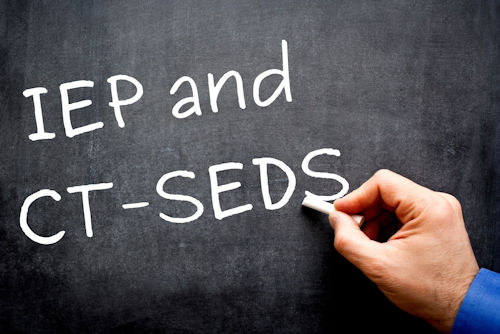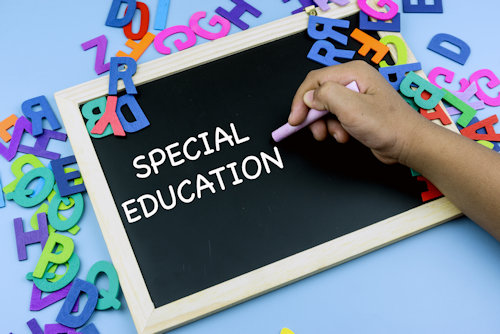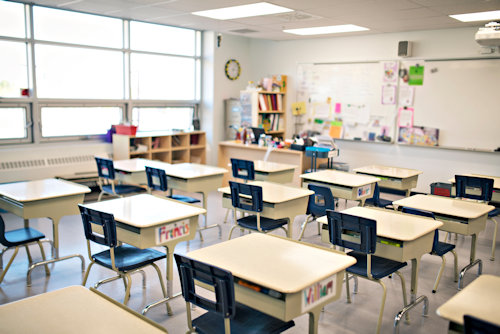Transition Planning
The
transition section
will only appear in the CT IEP if the Planning
and Placement Team (PPT) is addressing transition services, which
should start by age 14, or earlier as appropriate. The transition
section will be generated when the box is checked "yes" when asked
"Is this PPT developing post-secondary/transition goals and services
for the student?" If the team is not addressing
transition,
then the
information will not appear on the IEP document. This page will walk
you through the transition section of the IEP.
Transition Assessment
Every student must have yearly and ongoing
transition assessments. When assessments
are completed, the date and the results will be recorded on the IEP. A history of
assessments that were previously completed will be in the assessment summary.
If the district is not completing assessments, there will not be new information
in the section.
Does the student require specially designed instruction to support
independent living skills?
The members of the PPT will discuss if the
student needs
independent living skills.
If the student needs support in the
areas of money management, navigating, transportation, household management, and
personal health/grooming,
independent living skills goals and objectives
should be considered. For additional information on independent living skills,
click here.
Is the student in attendance at the meeting?
The student must be invited
to the meeting and a summary of the student's preferences and interests must be recorded.
If a student chooses not to attend their PPT meeting, the team is still required to make
transition decisions based on the individual student's needs, taking into account their
preferences and interests.
Were any outside agencies invited to attend the PPT meeting?
The team must discuss inviting outside agencies to the meeting. The parent or guardian must
provide written permission to invite an agency.
Has any participating agency agreed to provide or pay for services/linkages?
If an agency is providing a service or has agreed to pay for services, the IEP document
requires a description of what services the agency will be providing.
Postsecondary Outcome Goal Statements (PSOGS)
PSOGS
are measurable statements of what the student will be doing after high school
based on the student's transition assessments. Here are some
written examples of PSOGS.
There must be a PSOGS for Employment and Postsecondary Education/Training. A PSOGS for
Independent Living Skills will be created if the team agrees the student needs Independent
Living Skills instruction.
Here are some Frequently Asked Questions on PSOGS.
Course of Study
Has the student completed all academic requirements?
If the answer to this question is "Yes" then no academic study is required in the IEP and the
student will be working only on transition goals and services.
Course of study is a multi-year description or list of what courses and activities the student
is taking to help them achieve postsecondary goals and annual transition goals. No course of
study description is needed if the student has completed all academic requirements.
Anticipated Exit Criteria
The date the student either no longer needs special education, graduates with a regular high
school diploma, or the end of the school year in which the student reaches the age of 22.
Transition Present Levels, Goals, and Objectives
Before every annual goal, there is an area for parent and student input and
present levels of performance.
It must be updated annually to accurately reflect student needs and goals in the student
postsecondary goal statements. Information from transition assessments can go in this
section.
Annual Transition Goals
Annual transition goals
are required for education/training and employment. Annual goals for independent living
will be developed if the team decides that this is appropriate for the student. There must
be an annual transition goal for every PSOGS. For transition, there are no CT core standards
per se, however,
the CT Core Transition Skills
and
college and/or career readiness standards
can be used. At the bottom of the page, there is a section to state what related services are
necessary to achieve the goal.
Information will include:
Information on Secondary Transition
Secondary transition information is included in the Resources section of the IEP.
Documents will be made available to parents via the parent portal or can be printed
and mailed.
Summary of Performance (SOP) (Separate section of the transition page)
Upon exiting, the public agency shall provide the student with a summary of their
academic achievement and functional performance, which shall include recommendations on
how to assist the student in meeting their postsecondary goals. The
SOP
should be developed
with the student to:
- Assist the student in the transition from high school to higher education, training, and/or employment
- Determine the current impact of the disability
- Help establish a student's eligibility for reasonable accommodations and supports in postsecondary settings
- Enhance student's self-knowledge and self-advocacy skills
- Help establish eligibility for State and community agencies
More Information
To learn more information related to secondary transition planning, click here.












